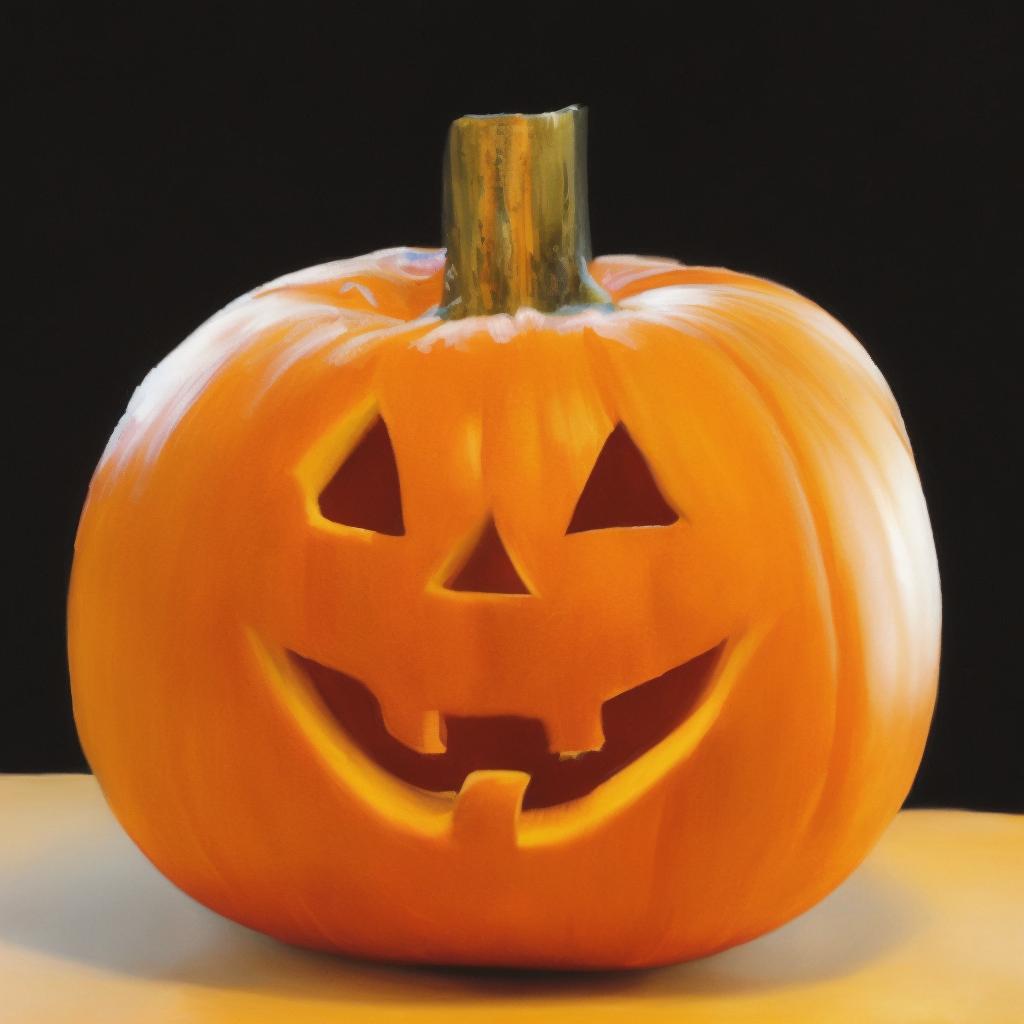
Master the Art of Growing the Perfect Pumpkin for a Spook-tacular Halloween!
As the autumn season approaches and the leaves begin to rustle in the cool breeze, it’s time to start planning for the perfect pumpkins for Halloween. Whether you’re an experienced gardener or just starting out, these tips will help you grow the most plump and vibrant pumpkins just in time for the spookiest night of the year. So put on your gardening gloves and let’s get started!
Table of Contents
- Choosing the Perfect Pumpkin Variety for Halloween
- Preparing the Soil and Location for Optimal Pumpkin Growth
- Ensuring Proper Watering and Fertilization Throughout the Growing Season
- Monitoring and Addressing Common Pumpkin Pests and Diseases
- Implementing Proper Pruning and Training Techniques for Optimal Pumpkin Development
- Harvesting and Curing Pumpkins at the Right Time for Maximum Longevity
- Tips for Carving and Preserving Pumpkins for Halloween Decor
- Q&A
- Conclusion
Choosing the Perfect Pumpkin Variety for Halloween
When it comes to selecting the perfect pumpkin for Halloween, there are a few important factors to consider. First and foremost, think about the size of pumpkin you want. Do you want a small pumpkin for a cute decoration, or a large pumpkin for carving a spooky Jack-o’-lantern?
Another important consideration is the color of the pumpkin. While orange pumpkins are traditional for Halloween, there are also white, green, and even striped varieties to choose from. Think about the overall look you want to achieve and choose a pumpkin color that complements your Halloween decor.
The shape of the pumpkin is also worth considering. Some varieties have tall, elongated shapes, while others are more squat and round. Consider the design you have in mind for your pumpkin carving or display, and choose a shape that will best showcase your creativity.
Lastly, don’t forget to think about the shelf life of the pumpkin variety you choose. Some pumpkins are better for carving and will last longer once they’re cut open, while others are better for decorative use and may not hold up as well over time. Make sure to choose a variety that will stay fresh for as long as you need it this Halloween season.
Preparing the Soil and Location for Optimal Pumpkin Growth
To grow the perfect pumpkins for Halloween, it’s important to start with the right soil and location. By following these tips, you can ensure that your pumpkins will thrive and be ready to be carved into spooky jack-o’-lanterns.
Choosing the Right Location: Select a sunny spot in your garden that receives at least 6-8 hours of sunlight per day. Make sure the area has good drainage to prevent waterlogging, which can cause root rot.
Preparing the Soil: Before planting your pumpkin seeds, enrich the soil with compost or well-rotted manure to provide the nutrients your pumpkins need to grow. Aim for a soil pH of 6.0-6.8 for optimal growth.
Spacing and Planting: Plant your pumpkin seeds in mounds or hills to improve drainage and warm the soil faster. Space the mounds at least 4-6 feet apart to give the pumpkin vines room to spread. Water the seeds well after planting to encourage germination.
| Planting Depth: | 1 inch |
|---|---|
| Germination Time: | 7-14 days |
Ensuring Proper Watering and Fertilization Throughout the Growing Season
Proper watering and fertilization are crucial for growing healthy and vibrant pumpkins for Halloween. By following these tips, you can ensure that your pumpkins will thrive and be ready to be carved into spooky jack-o’-lanterns.
Watering:
- Water your pumpkin plants deeply once a week, making sure the soil is consistently moist but not waterlogged.
- Consider using a soaker hose or drip irrigation system to deliver water directly to the roots of the plants.
- Avoid watering the foliage of the plants to prevent disease and promote healthy growth.
Fertilization:
- Use a balanced fertilizer with equal parts nitrogen, phosphorus, and potassium to promote strong and healthy pumpkin growth.
- Apply fertilizer every 2-3 weeks throughout the growing season, starting when the plants begin to develop their first true leaves.
- Consider incorporating organic matter, such as compost or aged manure, into the soil before planting to provide additional nutrients for the pumpkins.
| Pumpkin Type | Optimal Soil pH | Optimal Soil Temperature |
|---|---|---|
| Jack-o’-lantern | 6.0-6.8 | 70-90°F |
| Miniature | 6.0-6.8 | 70-90°F |
| White | 6.0-6.8 | 70-90°F |
| Green | 6.0-6.8 | 70-90°F |
| Striped | 6.0-6.8 | 70-90°F |
Monitoring and Addressing Common Pumpkin Pests and Diseases
Pumpkins are susceptible to a variety of pests and diseases, which can hinder their growth and affect their appearance. By regularly monitoring your pumpkin plants and taking preventative measures, you can ensure that your pumpkins will be healthy and ready for Halloween.
Common Pumpkin Pests:
- Squash bugs
- Cucumber beetles
- Vine borers
- Aphids
Common Pumpkin Diseases:
- Powdery mildew
- Downy mildewWatering and Fertilization Tips for Growing the Perfect Pumpkins
Pumpkins are a staple of Halloween decorations, and growing your own pumpkins can be a fun and rewarding experience. However, to ensure that your pumpkins grow big and healthy, proper watering and fertilization techniques are crucial. By following these tips, you can ensure that your pumpkin plants receive the necessary nutrients to thrive and produce perfect pumpkins for Halloween.
Watering Requirements
Different varieties of pumpkins have varying watering requirements. Here are some tips for watering different types of pumpkins:
- Jack-O-Lantern pumpkins require consistent moisture, but be careful not to overwater them.
- Mini pumpkins need less water compared to larger varieties.
- Heirloom pumpkins prefer well-draining soil and moderate watering.
To keep your pumpkins thriving throughout the season, monitor the soil moisture levels and adjust your watering and fertilizing schedule accordingly.
Monitoring and Addressing Common Pumpkin Pests and Diseases
When growing pumpkins for Halloween, it’s important to keep an eye out for common pests and diseases that can affect your plants. One common pest to watch out for is the squash bug, which can cause damage to the leaves and stems of your pumpkin plants. Regularly inspect your plants and remove any eggs or bugs you find to prevent squash bugs.
Powdery mildew is a common disease that can affect pumpkin plants, causing a white powdery coating on the leaves. To address powdery mildew, try spraying your plants with a mixture of water and baking soda. Additionally, spacing out your plants can help prevent the spread of this disease by promoting better air circulation.
Another common pest that can target pumpkin plants is the cucumber beetle. These pests can cause damage to leaves and transmit bacterial wilt disease. To control cucumber beetles, consider using row covers to protect your plants or applying insecticidal soap to deter them.
Vine borers are another common issue that pumpkin growers face. These pests burrow into the stems of the plants, causing wilting and eventual plant death. To prevent vine borers, try wrapping the base of your plant stems with aluminum foil to deter the pests from laying their eggs.
Implementing Proper Pruning and Training Techniques for Optimal Pumpkin Development
Proper pruning and training techniques are essential for optimal pumpkin development. By carefully tending to your pumpkin plants, you can ensure that they reach their full potential and produce beautiful, healthy fruit.
One of the most important aspects of pumpkin care is pruning. By removing excess vines and leaves, you can help direct the plant’s energy towards developing the best possible pumpkins. Use sharp, clean pruning shears to make clean cuts and reduce the risk of spreading disease.
Training your pumpkin plants to grow in a specific direction can also help maximize fruit production. Consider using trellises or other support structures to encourage upward growth and prevent sprawling. This will not only save space in your garden but also promote air circulation and reduce the risk of disease.
Remember to regularly check on your pumpkin plants as they grow and make adjustments to their pruning and training as needed. By staying proactive and attentive to your plants’ needs, you can help ensure that they thrive and produce perfect pumpkins just in time for Halloween.
Harvesting and Curing Pumpkins at the Right Time for Maximum Longevity
After months of caring for your pumpkin patch, it’s finally time to harvest your pumpkins. But harvesting at the right time and curing them properly can make a huge difference in their longevity. To ensure your pumpkins last until Halloween (and maybe even longer!), follow these tips:
-
Check for ripeness: Before picking your pumpkins, make sure they are fully ripe. A ripe pumpkin will have a hard rind that cannot be pierced with a fingernail and a deep, rich color. The stem should also be dry and corky. If the pumpkin is still green or has a soft stem, it may not be fully matured and won’t last as long.
-
Harvest carefully: When harvesting your pumpkins, use a sharp knife to cut the stem, leaving a few inches attached to the fruit. Be careful not to damage the skin or stem, as this can lead to rotting. Handle the pumpkins gently to avoid bruising or puncturing the skin.
-
Cure properly: After harvesting, it’s essential to cure your pumpkins to help them develop a hard outer shell and prevent rotting. Place the pumpkins in a warm, dry area with good air circulation for about two weeks. This will toughen the skin and allow any cuts or bruises to heal, extending their lifespan.
-
Store correctly: Once cured, store your pumpkins in a cool, dry place with a temperature around 50-55°F and low humidity. Avoid direct sunlight, as this can cause the pumpkin to decay prematurely. Check on your pumpkins regularly and discard any that show signs of rotting to prevent it from spreading to other pumpkins.
Tips for Carving and Preserving Pumpkins for Halloween Decor
Looking to create the perfect Halloween decor with pumpkins? Follow these tips to grow, carve, and preserve pumpkins for your spooktacular display!
- Grow the right pumpkins: Choose pumpkins that are suitable for carving, such as Jack-O-Lantern or Mini pumpkins.
- Harvest at the right time: Make sure your pumpkins are fully ripe before harvesting.
- Cure and store properly: Follow the tips mentioned above for curing and storing your pumpkins to ensure they last until Halloween.
- Use the right tools: Use sharp, clean carving tools to create intricate designs on your pumpkins.
- Preserve your pumpkins: To make your pumpkins last longer, consider spraying them with a mixture of water and bleach or petroleum jelly to prevent mold growth.
By following these tips, you can grow, carve, and preserve the perfect pumpkins for Halloween decorations. With proper care and attention, your pumpkins will be the highlight of your spooky display. Happy Halloween!
Tips for Growing Pumpkins:
- Select a sunny location with well-draining soil for your pumpkin patch.
- Regularly water your pumpkins, especially during hot and dry periods.
- Use mulch to retain moisture and prevent weeds from growing around your pumpkins.
- Harvest your pumpkins when the vines start to dry out and the pumpkins sound hollow when tapped.
Tips for Carving Pumpkins:
- Before cutting, trace your design onto the pumpkin to ensure accuracy.
- Use a sharp knife or pumpkin carving kit for precise cuts.
- Scoop out all the seeds and pulp from the pumpkin to prevent mold growth.
- Consider using battery-operated candles or lights instead of open flames for safety.
Tips for Preserving Pumpkins:
- Apply a thin layer of petroleum jelly on the cut edges of the pumpkin to prevent drying out.
- Store your carved pumpkins in a cool and shaded area to prolong their freshness.
- Spritz your pumpkins with a mixture of water and bleach to prevent mold growth.
- Consider using a pumpkin preservative spray to extend the life of your carved pumpkins.
Frequently Asked Questions
Q: How can I ensure that my pumpkin grows to the perfect size for Halloween carving?
A: Choose a variety of pumpkin known for producing large fruits and provide ample space for the vines to spread out and grow.
Q: What is the best way to protect my pumpkin plants from pests and diseases?
A: Implement preventive measures such as using organic pesticides, rotating crop locations, and regularly checking for signs of infestation to keep your pumpkin plants healthy.
Q: When should I start planting my pumpkin seeds to ensure they are ready in time for Halloween?
A: Pumpkin seeds should be planted in late spring or early summer, depending on your region’s climate and growing season, to ensure they have enough time to mature before Halloween festivities begin.
Q: How can I ensure that my pumpkins grow in a uniform shape and size?
A: Proper spacing between plants, pruning vines to encourage growth in a specific direction, and removing any misshapen or damaged fruits can help promote the development of uniform pumpkins.
Q: Are there any special tips for preserving freshly harvested pumpkins until Halloween?
A: Store pumpkins in a cool, dry place away from direct sunlight, periodically check for signs of decay or mold, and avoid placing heavy objects on top of them to extend their shelf life until Halloween.
To Conclude
As you embark on your pumpkin-growing journey for Halloween, keep these helpful tips in mind to ensure your pumpkins are perfect for carving and decorating. With a little care and attention, you can cultivate the most vibrant and healthy pumpkins that will impress everyone who sees them. So roll up your sleeves, get your hands dirty, and watch as your pumpkins flourish into works of art. Happy growing and happy Halloween!

